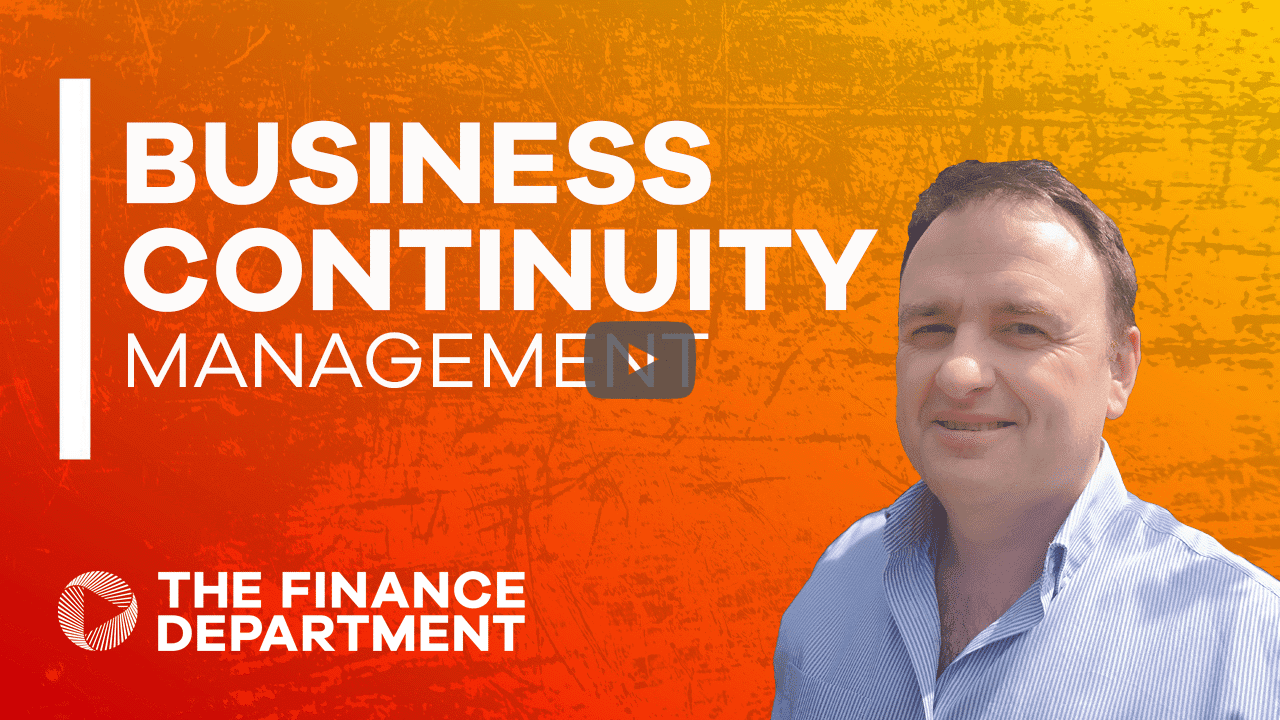Join today and start learning
TFD is the learning platform built for finance professionals.
This content is available as part of our bitesized video series.
Watch this video today by joining our free community.
Video : The Key Metrics To Track For Your Subscription Business
In this video Brian outlines the key metrics you should be tracking if you have a subscription business. This video will cover
– Customer Acquisition Costs
– Annual Contract Value
– Annual Recurring Revenue
– Customer Churn
– Gross Margin Percentages
– Cache Efficiency Ratio
– Customer Lifetime Value
– CAC Payback Period
An Introduction to the Key Metrics to Track in Subscription Businesses
Today we are going to be covering a really popular topic that I’m often asked about. What are those key metrics that I should be tracking in my subscription business?
Now, the answer to that will differ depending on whether you’re an early stage or a late stage company. The early stage companies are often heavily focused on revenue and growth, whilst the later stage companies are more concerned with cache efficiency, as well as optimization of the business model.
Early Stage Metrics
1) Customer Acquisition Cost (CAC)
Let’s get started on the Early Stage Metrics.
First up, is the Customer Acquisition Cost or CAC. That is a measure of how much it costs you to acquire a single customer, and is calculated by taking your total sales and marketing costs and dividing that by the number of new customers you have acquired for a specific period often a single month.
Clearly, the lower the CAC, the better, and the low CAC often implies some very effective marketing campaigns, or maybe some viral campaigns that have cost you little to nothing through word-of-mouth, that have seen a really high subscriber increase.
2) Annual Contract Value (ACV)
Next up is the annual contract value or said another way, how much the average customer spends with you per month. Expressed as an annual number, this is somewhat comparable to the average basket size maybe for an e-commerce retailer and can be influenced by things like a price increase, or maybe selling add-ons or additional products to existing customers.
Again, the goal there would be to increase your Annual Contract Value or ACV through time.
3) Annual Recurring Revenue (ARR)
Next up is the Annual Recurring Revenue, probably the most popular metric in subscription businesses, and the ARR or Annualised Recurring Revenue, simply represents your current month’s revenue from your existing customer base expressed over 12 months.
This effectively becomes the forward projection for revenue for your business. And clearly it’s important to show growth in the ARR.
4) Customer Churn
Last up on the negative side is Customer Churn, which is a simple representation of how many customers you have lost for a specific time, say the same month.
What becomes important is to enable you to take your top line revenue number, and hopefully you’re showing some nice growth, and then pack it with these four metrics, and explain how they interact and what’s happened with those metrics that has driven them top line performance.
So for example, you could describe you have lowered your CAC during a period, which means you’ve acquired more customers for the same budget or even lower budget. You’ve also managed to increase the average amount that your customer spends with you represented by increase in your ACV .
You hopefully have shown some good ARR growth or Annualised Recurring Revenue growth, and you also want to show how you’re focusing on your Customer Churn to learn about your product, and find the ways to reduce that Customer Churn. So really explaining the interaction of those four becomes really important.
5) Degree of Profitability
Lastly, at the early stage, it’s important to focus on some degree of profitability, there often won’t be too many numbers involved at the early stages.
Gross Margin or Gross Margin Percentage is probably the simplest and number one metric to track. What is your Revenue List? Your cost of goods sold, take that Gross Margin and divide that by your Revenue, again to express it as a percentage. Now cost of goods sold for a subscription business will often be good infrastructure and hosting costs. Maybe your cost of customer services or your online development costs.
Later Stage Metrics
Next up are the Later Stage Metrics. Now these metrics shouldn’t be replacing the original metrics that we discussed, but really adding on to them as they shift the focus a little bit towards cash and efficiency, as well as optimization of your business model.
1) Cache Efficiency Ratio
First up is the Cache Efficiency Ratio, which measures how well you’re deploying cash in your business to achieve revenue growth. The formula takes the change in ARR for a period, often a month, and divides it by the change in cash often the cash outflow, for most startups.
A really high ratio means that you’re doing some really good things on your revenue metrics that we discuss, to ensure that you’re generating higher growth for a fixed amount of cash investment, for that period.
2) Customer Lifetime Value
Next up is your Customer Lifetime Value. The Customer Lifetime Value measures, the total expected revenue from a single customer, for the duration of that customer’s subscription. Again, this is a key metric, but something that can be quite difficult to measure in the early stages, when you hopefully don’t have too much Customer Churn.
What the goal is of course, is to increase the Customer Lifetime Value by either, increasing the Annual Contract Value or the ACV per customer, or of course extending the lifetime of that customer, by you know, adding different discounts, or maybe retention strategies that help you to reduce churn, and thereby increase your Customer Lifetime Value.
An interesting play is to then measure the ratio of your Customer Lifetime Value, to your Customer Acquisition Cost. This ratio actually forms one of the bedrocks of most business models in the subscription world, where a CLV to CAC ratio, north of three is often considered good, I’ve often seen lines of six and sometimes even a lot higher. But anything above three is considered acceptable, and it’s a key measure of the actual core profitability of your model.
How much revenue will you get from a single customer for the lifetime of their contract, divided by the cost to acquire that customer.
3) CAC Payback Period
Lastly, we look at the CAC Payback Period, which is simply a measure of how long it takes you to recoup the cost to acquire that customer. So if your CAC is $100 and your monthly subscription revenue is $25, then your CAC Payback Period will be 4 months.
Brian is a seasoned finance expert who has experience spanning both the corporate world as a SVP in various finance and sales roles, as well as the consulting space, helping a variety of business to grow and prosper.
Video: The Key Metrics To Track For Your Subscription Business
In this video Brian outlines the key metrics you should be tracking if you have a subscription business. This video will cover
– Customer Acquisition Costs
– Annual Contract Value
– Annual Recurring Revenue
– Customer Churn
– Gross Margin Percentages
– Cache Efficiency Ratio
– Customer Lifetime Value
– CAC Payback Period
An Introduction to the Key Metrics to Track in Subscription Businesses
Today we are going to be covering a really popular topic that I’m often asked about. What are those key metrics that I should be tracking in my subscription business?
Now, the answer to that will differ depending on whether you’re an early stage or a late stage company. The early stage companies are often heavily focused on revenue and growth, whilst the later stage companies are more concerned with cache efficiency, as well as optimization of the business model.
Early Stage Metrics
1) Customer Acquisition Cost (CAC)
Let’s get started on the Early Stage Metrics.
First up, is the Customer Acquisition Cost or CAC. That is a measure of how much it costs you to acquire a single customer, and is calculated by taking your total sales and marketing costs and dividing that by the number of new customers you have acquired for a specific period often a single month.
Clearly, the lower the CAC, the better, and the low CAC often implies some very effective marketing campaigns, or maybe some viral campaigns that have cost you little to nothing through word-of-mouth, that have seen a really high subscriber increase.
2) Annual Contract Value (ACV)
Next up is the annual contract value or said another way, how much the average customer spends with you per month. Expressed as an annual number, this is somewhat comparable to the average basket size maybe for an e-commerce retailer and can be influenced by things like a price increase, or maybe selling add-ons or additional products to existing customers.
Again, the goal there would be to increase your Annual Contract Value or ACV through time.
3) Annual Recurring Revenue (ARR)
Next up is the Annual Recurring Revenue, probably the most popular metric in subscription businesses, and the ARR or Annualised Recurring Revenue, simply represents your current month’s revenue from your existing customer base expressed over 12 months.
This effectively becomes the forward projection for revenue for your business. And clearly it’s important to show growth in the ARR.
4) Customer Churn
Last up on the negative side is Customer Churn, which is a simple representation of how many customers you have lost for a specific time, say the same month.
What becomes important is to enable you to take your top line revenue number, and hopefully you’re showing some nice growth, and then pack it with these four metrics, and explain how they interact and what’s happened with those metrics that has driven them top line performance.
So for example, you could describe you have lowered your CAC during a period, which means you’ve acquired more customers for the same budget or even lower budget. You’ve also managed to increase the average amount that your customer spends with you represented by increase in your ACV .
You hopefully have shown some good ARR growth or Annualised Recurring Revenue growth, and you also want to show how you’re focusing on your Customer Churn to learn about your product, and find the ways to reduce that Customer Churn. So really explaining the interaction of those four becomes really important.
5) Degree of Profitability
Lastly, at the early stage, it’s important to focus on some degree of profitability, there often won’t be too many numbers involved at the early stages.
Gross Margin or Gross Margin Percentage is probably the simplest and number one metric to track. What is your Revenue List? Your cost of goods sold, take that Gross Margin and divide that by your Revenue, again to express it as a percentage. Now cost of goods sold for a subscription business will often be good infrastructure and hosting costs. Maybe your cost of customer services or your online development costs.
Later Stage Metrics
Next up are the Later Stage Metrics. Now these metrics shouldn’t be replacing the original metrics that we discussed, but really adding on to them as they shift the focus a little bit towards cash and efficiency, as well as optimization of your business model.
1) Cache Efficiency Ratio
First up is the Cache Efficiency Ratio, which measures how well you’re deploying cash in your business to achieve revenue growth. The formula takes the change in ARR for a period, often a month, and divides it by the change in cash often the cash outflow, for most startups.
A really high ratio means that you’re doing some really good things on your revenue metrics that we discuss, to ensure that you’re generating higher growth for a fixed amount of cash investment, for that period.
2) Customer Lifetime Value
Next up is your Customer Lifetime Value. The Customer Lifetime Value measures, the total expected revenue from a single customer, for the duration of that customer’s subscription. Again, this is a key metric, but something that can be quite difficult to measure in the early stages, when you hopefully don’t have too much Customer Churn.
What the goal is of course, is to increase the Customer Lifetime Value by either, increasing the Annual Contract Value or the ACV per customer, or of course extending the lifetime of that customer, by you know, adding different discounts, or maybe retention strategies that help you to reduce churn, and thereby increase your Customer Lifetime Value.
An interesting play is to then measure the ratio of your Customer Lifetime Value, to your Customer Acquisition Cost. This ratio actually forms one of the bedrocks of most business models in the subscription world, where a CLV to CAC ratio, north of three is often considered good, I’ve often seen lines of six and sometimes even a lot higher. But anything above three is considered acceptable, and it’s a key measure of the actual core profitability of your model.
How much revenue will you get from a single customer for the lifetime of their contract, divided by the cost to acquire that customer.
3) CAC Payback Period
Lastly, we look at the CAC Payback Period, which is simply a measure of how long it takes you to recoup the cost to acquire that customer. So if your CAC is $100 and your monthly subscription revenue is $25, then your CAC Payback Period will be 4 months.
Brian is a seasoned finance expert who has experience spanning both the corporate world as a SVP in various finance and sales roles, as well as the consulting space, helping a variety of business to grow and prosper.









